Cc Capture

Is carbon capture technology a viable solution for industries with high carbon emissions ?
Carbon capture technology (CCT) is a process that captures carbon dioxide (CO2) emissions from burning fossil fuels and stores it to prevent its release into the atmosphere. This technology has been proposed as a solution to reduce greenhouse gas emissions from industries with high carbon footprints. However, there are both advantages and challenges associated with CCT. The primary advantage of CCT is its potential to significantly reduce greenhouse gas emissions from power plants and other industrial processes by capturing up to 90% of CO2 emissions. It also allows the continued use of fossil fuels while reducing their environmental impact, which is particularly important for countries heavily reliant on coal or natural gas for their energy needs. Additionally, the development and implementation of CCT could create new job opportunities in research, engineering, construction, and operation of these facilities. However, one of the biggest challenges facing CCT is its high cost. The installation and operation of carbon capture systems can be expensive, making it difficult for many companies to invest in this technology. Carbon capture processes also require energy, often from burning more fossil fuels, which can lead to a net increase in CO2 emissions unless the energy source is renewable. Once captured, CO2 needs to be transported and stored safely, requiring infrastructure that does not currently exist in many regions and raising concerns about leakage and long-term storage solutions. In conclusion, while carbon capture technology offers promising benefits for reducing greenhouse gas emissions from industries with high carbon footprints, it also presents significant challenges that need to be addressed before it becomes a widely adopted solution. Cost-effectiveness, energy requirements, and storage infrastructure are key areas that require further development and investment to make CCT a viable option for combating climate change.

How can we improve the efficiency of carbon capture and storage technologies ?
This text is about improving the efficiency of carbon capture and storage (CCS) technologies. The author suggests several strategies, including advances in capture technology, optimization of transport and storage processes, integration with renewable energy sources, innovations in material science, policy and economic incentives, and public awareness and education. The author believes that these measures can make CCS a more viable solution for combating climate change.

What is carbon capture technology and how does it work ?
Carbon capture technology is a set of methods aimed at reducing CO2 emissions from power plants, industrial processes, and other sources. The main types are post-combustion capture, oxy-fuel combustion, and pre-combustion capture, each with its specific techniques and challenges. While these technologies offer significant potential in the fight against climate change, they face economic and logistical barriers such as high costs and the need for safe storage solutions. Ongoing research seeks to improve efficiency and reduce costs, making carbon capture an increasingly viable solution in achieving net-zero emissions targets.

What is carbon capture and how does it work ?
Carbon capture, a technology to reduce CO2 emissions from industrial processes and power generation facilities, comprises three main types: post-combustion, oxy-fuel combustion, and pre-combustion. Each method captures CO2 differently, and the captured gas can be stored or used for other purposes. Carbon capture offers benefits such as reducing greenhouse gas emissions and supporting the transition to a low-carbon economy but faces challenges like high costs and energy requirements.

What are some examples of successful carbon capture projects ?
This text provides a topic summary of successful carbon capture projects, including the Boundary Dam Power Plant in Saskatchewan, Canada; Petra Nova Carbon Capture Project in Texas, USA; Quest Carbon Capture Project in Alberta, Canada; Schwarze Pumpe Power Plant in Brandenburg, Germany; and Lacq CCS Pilot Project in Aquitaine, France. Each project captures CO2 emissions from industrial processes and uses them for enhanced oil recovery or storage in depleted gas fields, reducing greenhouse gas emissions by up to 90%.
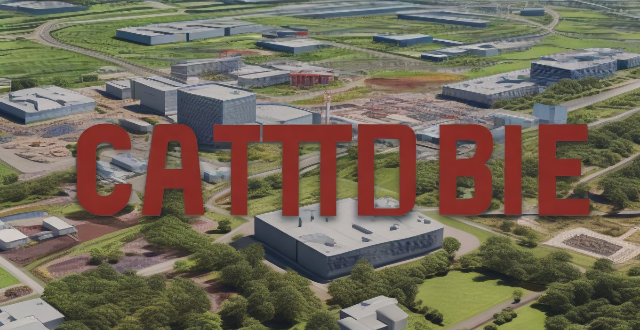
How can we improve carbon capture technology to make it more efficient and cost-effective ?
Carbon capture technology is a crucial tool in the fight against climate change. However, the current state of this technology is not yet efficient or cost-effective enough to be widely adopted. To improve carbon capture technology, we need to enhance efficiency and reduce costs through advancements in material science, optimization of processes, integration with other technologies, direct air capture, economies of scale, government incentives, private investment, improved maintenance and operation, and continuous research and development. With these efforts, we can make carbon capture technology accessible and practical for widespread use in the fight against climate change.

Can carbon capture help us achieve our climate goals ?
Carbon capture and storage (CCS) has the potential to mitigate climate change by capturing CO2 emissions from power plants and industrial processes, preventing them from entering the atmosphere. The captured CO2 can be transported to a suitable location for long-term storage or used for enhanced oil recovery. However, CCS technology faces challenges such as high costs, energy losses, and public acceptance issues. While it is not a silver bullet, CCS could play a valuable role in reducing greenhouse gas emissions when integrated with renewable energy strategies and energy efficiency measures.
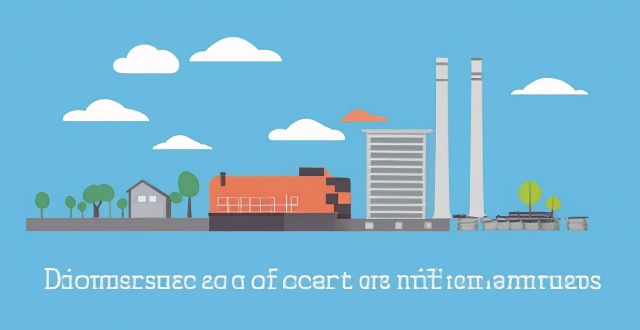
What is the significance of carbon capture and storage technologies ?
The text discusses the importance of carbon capture and storage (CCS) technologies in mitigating climate change, enabling clean energy transition, and supporting industrial processes. It highlights three main methods of capturing CO2: post-combustion capture, oxy-fuel combustion, and pre-combustion capture. The text also describes various ways to store CO2, such as geological storage, ocean storage, and enhanced oil recovery (EOR). Additionally, it mentions the potential for carbon utilization through sequestration, synthetic fuels production, and industrial applications. However, the text acknowledges challenges such as cost, energy penalty, public acceptance, and regulatory frameworks that need to be addressed for successful implementation of CCS projects.
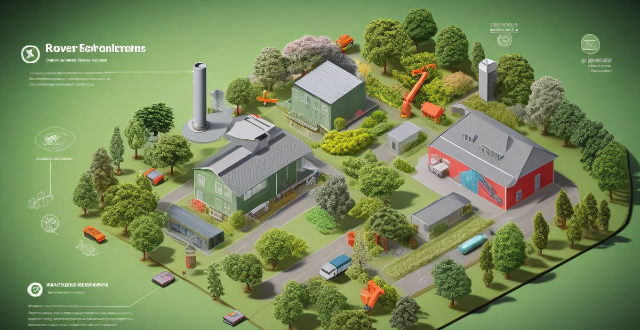
What are the potential benefits of carbon capture technology for the environment ?
Carbon capture technology can help reduce greenhouse gas emissions, improve air quality, encourage economic growth, and enhance ecosystem health. It has the potential to mitigate climate change, meet emission reduction targets, enhance energy security, reduce pollutants, protect human health, create jobs, stimulate innovation, promote clean energy, protect biodiversity, preserve natural resources, and restore degraded landscapes. Investing in carbon capture technology may prove to be crucial for creating a more sustainable future.

Can carbon capture technology be used in conjunction with other renewable energy sources ?
Carbon capture technology can be used with renewable energy sources to reduce greenhouse gas emissions and mitigate climate change. There are several ways that this technology can be used, including post-combustion capture, pre-combustion capture, oxy-fuel combustion, and chemical looping combustion. However, there are also challenges and considerations that must be taken into account, such as cost, energy requirements, and storage.
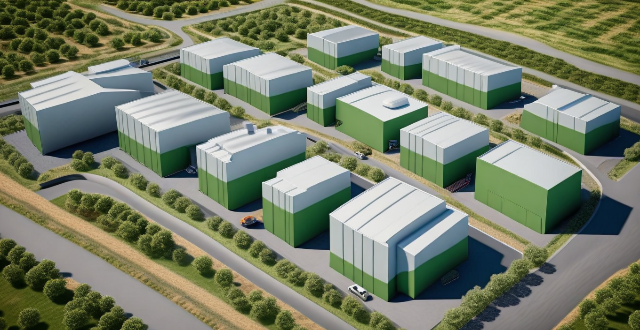
What are the challenges associated with implementing carbon capture on a large scale ?
Carbon capture and storage (CCS) is a technology that aims to reduce greenhouse gas emissions by capturing carbon dioxide (CO2) from industrial processes and storing it underground. Implementing CCS on a large scale poses several challenges, including high costs, technology maturity, storage capacity, regulatory and legal barriers, public perception, and energy requirements. Overcoming these challenges is essential for the successful implementation of CCS on a large scale. Collaboration among governments, industry, and researchers will be necessary to develop more efficient and cost-effective carbon capture technologies, establish clear regulations and liability frameworks, and raise public awareness about the benefits of CCS.

How do sports photographers capture the beauty and emotion of athletic events ?
**How Sports Photographers Capture the Beauty and Emotion of Athletic Events** 1. **Understanding the Sport**: Research and anticipation help photographers capture key moments. 2. **Equipment Choices**: Appropriate lenses, high-speed cameras, and stabilizing devices are essential. 3. **Positioning**: Unique angles, perspectives, and clean backgrounds enhance photos. 4. **Timing and Composition**: Precise timing and thoughtful composition are crucial. 5. **Lighting**: Natural and artificial lighting affect photo quality. 6. **Emotion and Storytelling**: Capturing emotions and telling stories through images is impactful. 7. **Post-Processing**: Editing and selecting the best shots is part of the process. 8. **Ethics and Professionalism**: Respect and professionalism guide sports photographers in their work.

What are the benefits of carbon capture technology ?
Carbon capture technology offers benefits such as reduced greenhouse gas emissions, improved energy efficiency, economic opportunities, and potential for climate change mitigation.

How much does it cost to implement carbon capture technology ?
The article discusses the cost of implementing carbon capture technology, which is a critical tool in combating climate change. The cost can be influenced by various factors such as the type of technology, scale of implementation, location, economic conditions, and regulatory requirements. According to estimates from the International Energy Agency, the cost of capturing CO2 from coal-fired power plants ranges from $50 to $100 per tonne, while for natural gas-fired power plants, it ranges from $70 to $110 per tonne. These costs do not include transportation and storage expenses. As technology advances and more facilities adopt carbon capture solutions, the cost is expected to decrease over time. Despite the initial high investment, the long-term benefits of reducing CO2 emissions make carbon capture technology a worthwhile endeavor.

Is carbon capture a viable solution for all industries and sectors ?
Carbon capture technology, while offering significant potential to reduce industrial carbon emissions, faces challenges in universal adoption due to high costs and energy penalties. Its applicability varies across sectors like power generation, manufacturing, and transportation. Economic considerations include hefty investments and potential job creation, while environmental benefits encompass direct emission reduction and support for a circular economy. The viability of carbon capture depends on industry-specific factors, economic conditions, and technological progress.

What are the ethical considerations surrounding the use of carbon capture technology ?
Carbon capture technology is a method used to reduce carbon dioxide emissions, but it raises ethical concerns such as cost and accessibility, potential environmental impact, long-term effects, and accountability. It is important to ensure that the technology is implemented responsibly and equitably.

How can carbon capture technology be scaled up to address global climate change ?
The article discusses the challenges and strategies associated with scaling up carbon capture technology (CCT) to mitigate global climate change. The challenges include high costs, technological limitations, infrastructure and logistics issues, and regulatory and legal frameworks. To overcome these challenges, strategies such as policy and economic incentives, technological innovation, infrastructure development, public-private partnerships, and international cooperation are proposed. Scaling up CCT is crucial in reducing atmospheric CO2 levels and combating global climate change.

What are the main challenges faced by carbon capture technology ?
Carbon capture technology faces challenges in scalability, integration, high costs, lack of incentives, storage solutions, and ecological impact. Addressing these issues is crucial for its successful deployment at a global scale.
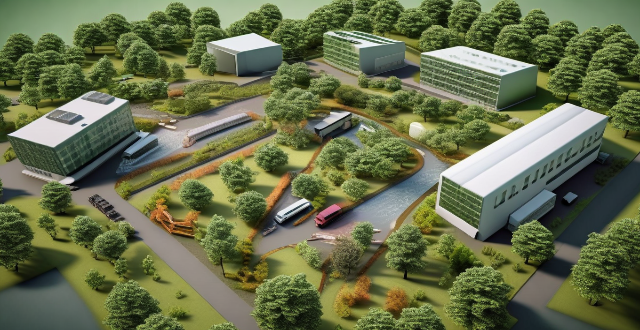
What innovations are needed to reach ambitious climate objectives ?
To reach ambitious climate objectives, innovations areTo reach ambitious climate objectives, innovations are renewable energy sources, carbon capture sustainable agriculture and forestry, circular economy and waste management, policy and finance, and education and awareness. Key areas include improved insulation technology, smart building management systems, electric vehicles, public transit efficiency, photovoltaic efficiency, offshore wind farms, enhanced geothermal systems, direct air capture, bioenergy with carbon capture and storage, precision farming, agroforestry, reforestation and afforestation, resource recovery, biodegradable materials, zero waste strategies, carbon pricing, green bonds, public-private partnerships, educational programs, and behavior change campaigns. Collaboration among governments, businesses, researchers, and citizens worldwide is crucial to drive these changes forward.

What are some innovative technologies being developed to address climate change ?
The article provides a summary of innovative technologies being developed to address climate change. These include renewable energy sources such as solar, wind, hydroelectric, and geothermal power; carbon capture and storage (CCS) methods like post-combustion capture, oxy-fuel combustion, and pre-combustion capture; electric vehicles (EVs); smart grid technology; nuclear fusion; afforestation and reforestation; and green building design. These technologies aim to reduce greenhouse gas emissions, increase energy efficiency, and promote sustainable practices in order to combat climate change and transition towards a more sustainable future.

What are some examples of geoengineering techniques ?
Geoengineering techniques aim to counteract climate change through large-scale interventions in the Earth's climate system. These techniques include solar radiation management (SRM) methods like stratospheric aerosol injection and space sunshades, as well as carbon dioxide removal (CDR) strategies such as direct air capture (DAC), ocean fertilization, bioenergy with carbon capture and storage (BECCS), enhanced weathering, forestation and reforestation, and soil carbon sequestration. Other techniques involve albedo modification on Earth and atmospheric aerosol spraying. Despite their potential, these methods pose significant risks and uncertainties, necessitating further research before widespread use.

What are the potential environmental impacts of carbon capture and storage ?
Carbon capture and storage (CCS) can mitigate greenhouse gas emissions but poses environmental impacts such as geological risks, land use disruption, water resource issues, energy penalties, and economic and social effects. To minimize these impacts, CCS projects should undergo thorough EIAs and include robust monitoring systems.

What is the Consumer Confidence Index and how does it impact the economy ?
The Consumer Confidence Index (CCI) is a measure of consumer sentiment about the economy. It impacts the economy by serving as an indicator of economic health, influencing spending habits, affecting policy decisions, guiding business strategies, and causing market reactions. Overall, the CCI helps stakeholders make informed decisions based on consumer confidence levels.
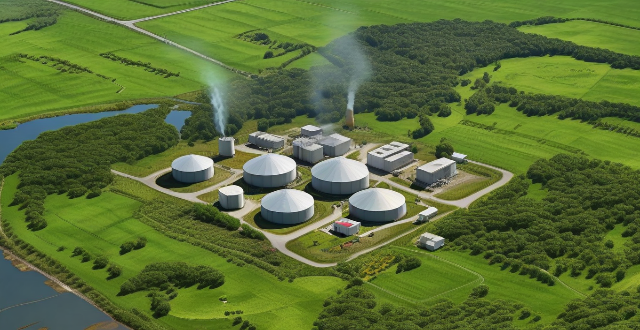
What is the significance of the United Nations Framework Convention on Climate Change (UNFCCC) ?
The United Nations Framework Convention on Climate Change (UNFCCC) is a significant international environmental treaty that aims to stabilize greenhouse gas concentrations in the atmosphere at a level that would prevent dangerous human interference with the climate system. It was adopted in 1992 and came into force in 1994, and has been ratified by 197 parties, including all of the world's major industrialized nations. The UNFCCC sets out commitments for developed country Parties and developing country Parties, holds annual Conferences of the Parties (COP), and recognizes the importance of both adaptation and mitigation in addressing climate change. The UNFCCC also acknowledges that developed countries have a responsibility to provide financial and technological support to developing countries to help them address climate change. The significance of the UNFCCC lies in its role as a framework for global cooperation on climate change, its political commitment by countries around the world, its science-based approach, its emphasis on equity, and its long-term vision for addressing climate change.
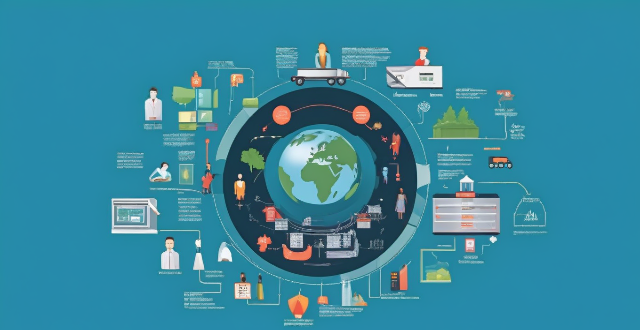
What are some examples of successful climate risk management initiatives around the world ?
Climate risk management is crucial for environmental sustainability, and successful initiatives worldwide include the Green Climate Fund (GCF), the European Union's adaptation strategy, the United Nations Framework Convention on Climate Change (UNFCCC), and the New York City Panel on Climate Change (NPCC). The GCF supports developing countries in tackling climate change through low-emission projects. The EU's strategy integrates adaptation into policy areas and invests in research. The UNFCCC provides a framework for global cooperation on climate change mitigation and adaptation. The NPCC offers scientific advice to New York City on climate risks and adaptation strategies. These initiatives adopt innovative approaches, collaborate across sectors, and engage stakeholders to build a sustainable future.

What role does the United Nations play in global climate change negotiations ?
The United Nations plays a crucial role in global climate change negotiations by providing a platform for international cooperation and facilitating discussions among member states. The UN's involvement in climate change issues dates back to the 1970s, when it began organizing conferences and meetings to address the growing concern over the impact of human activities on the environment. The key functions of the United Nations in climate change negotiations include: 1. Providing a Forum for Dialogue and Cooperation: The UN serves as a neutral forum where countries can come together to discuss and negotiate solutions to climate change. Through its various bodies and agencies, such as the United Nations Framework Convention on Climate Change (UNFCCC), the UN creates an environment conducive to collaboration and consensus-building among nations with diverse interests and priorities. 2. Facilitating International Agreements and Treaties: The UNFCCC, established under the UN, is the primary international environmental treaty dedicated to combating climate change. It has facilitated the adoption of several key agreements, including the Kyoto Protocol and the Paris Agreement, which set out targets for reducing greenhouse gas emissions and adapting to the impacts of climate change. 3. Promoting Research and Information Sharing: The UN supports research into climate science and promotes the sharing of knowledge and best practices among countries. This includes initiatives like the Intergovernmental Panel on Climate Change (IPCC), which provides scientific assessments of climate change and its potential impacts, informing policy decisions at both national and international levels. 4. Supporting Adaptation and Mitigation Efforts: Recognizing that some regions are more vulnerable to the effects of climate change than others, the UN assists countries in developing adaptation strategies to cope with these challenges. Additionally, it supports mitigation efforts by encouraging the adoption of clean energy technologies and sustainable development practices. 5. Advocating for Climate Finance and Technology Transfer: The UN advocates for increased funding and investment in climate action, particularly for developing countries that lack the resources to implement effective climate policies. It also pushes for the transfer of environmentally sound technologies between developed and developing nations to help bridge the gap in technological capabilities. 6. Engaging Non-State Actors and Civil Society: Beyond state actors, the UN involves non-governmental organizations (NGOs), businesses, and civil society groups in climate change discussions. These stakeholders contribute valuable perspectives and expertise, enhancing the diversity of ideas and solutions brought to the table during negotiations. 7. Monitoring Progress and Holding States Accountable: The UNFCCC oversees the implementation of climate commitments made by countries through regular reporting and review processes. This ensures transparency and accountability in meeting agreed-upon targets, fostering trust among participating nations.